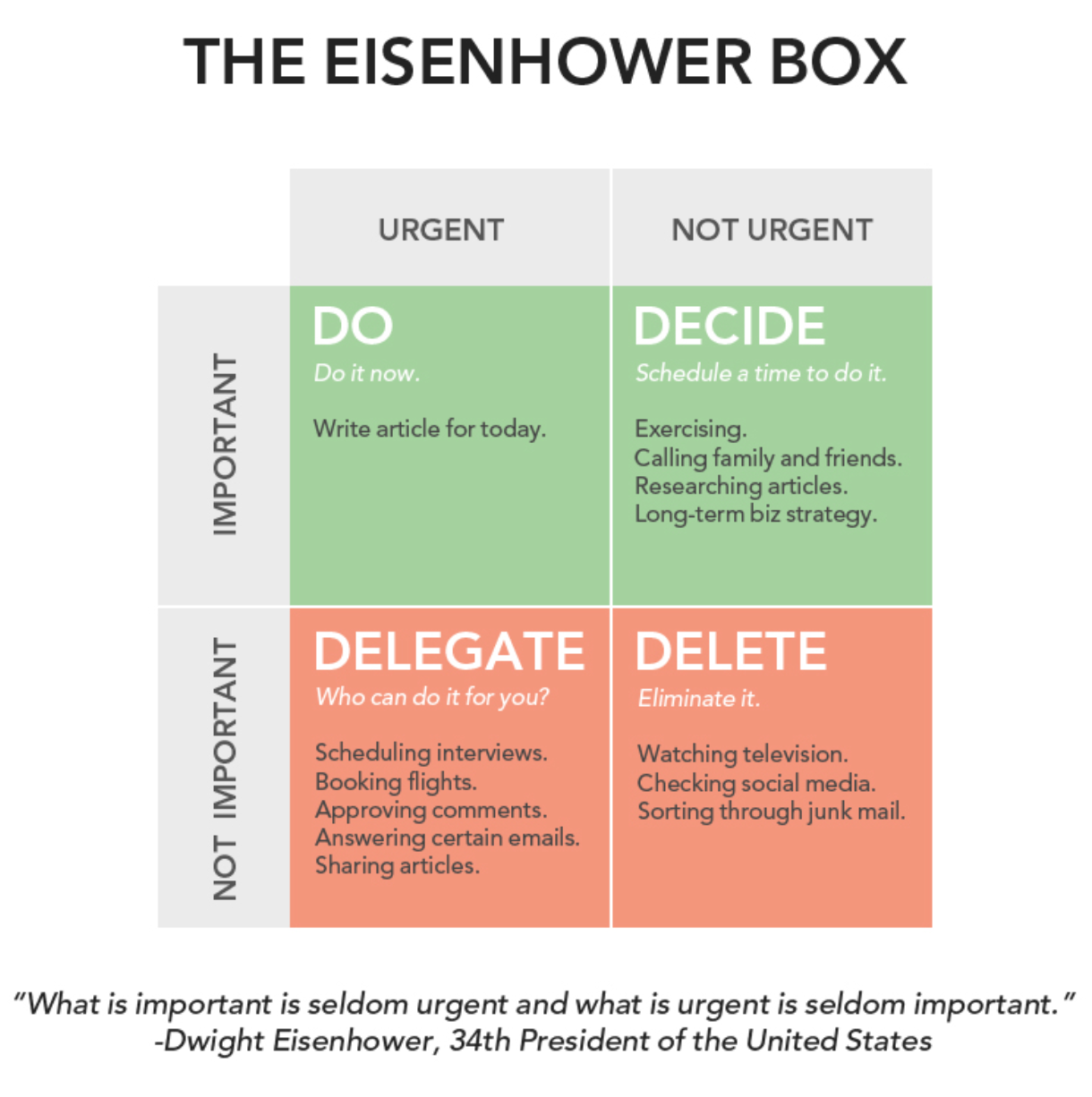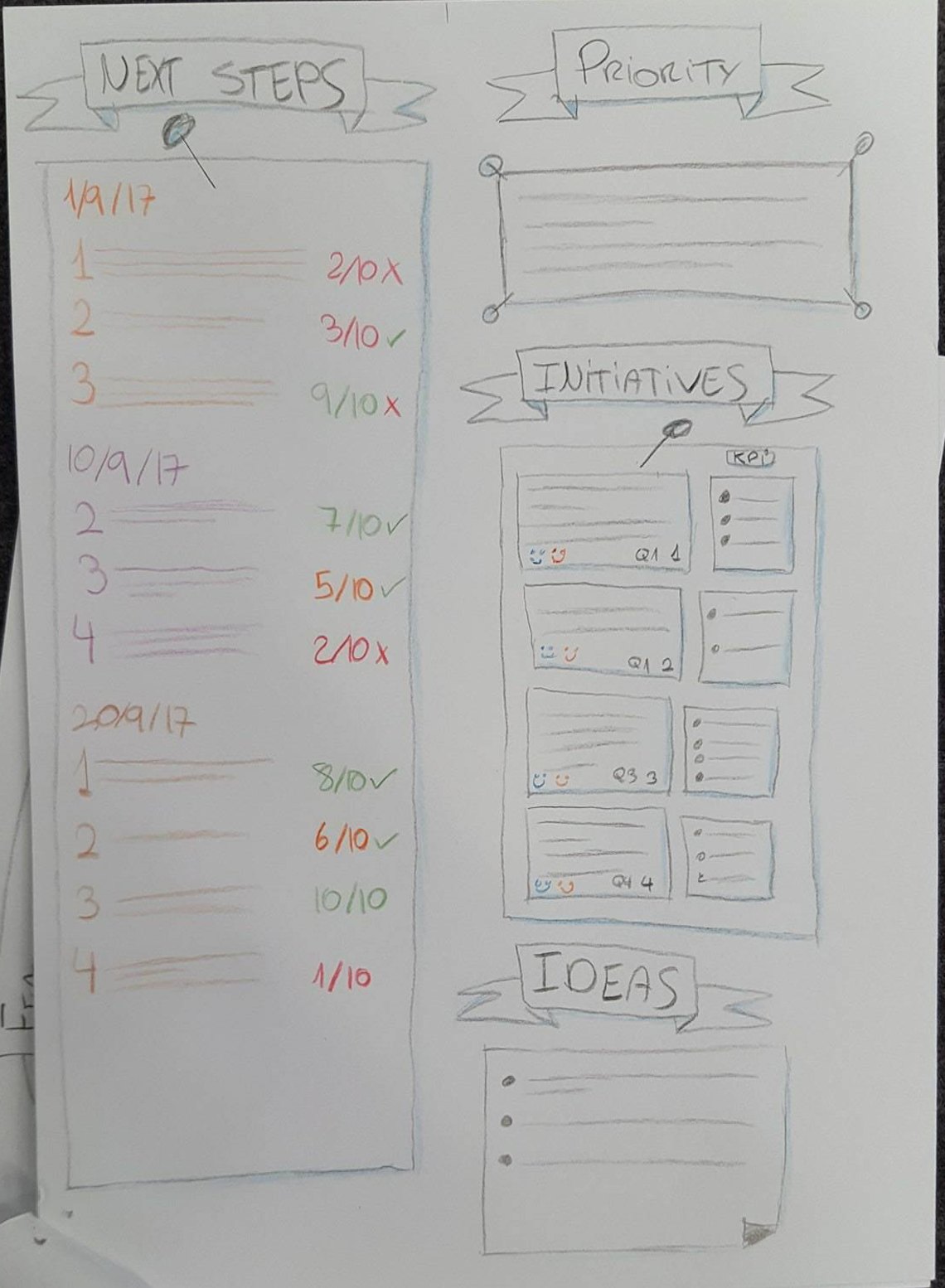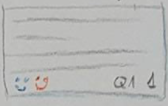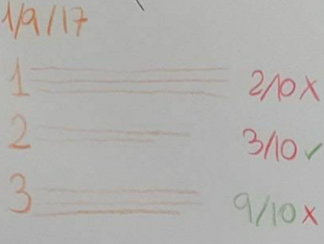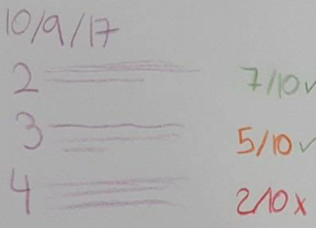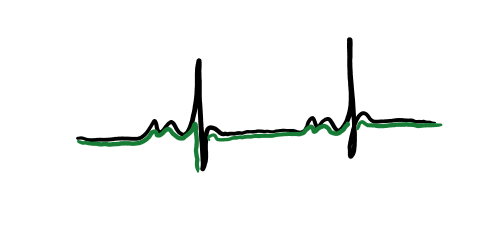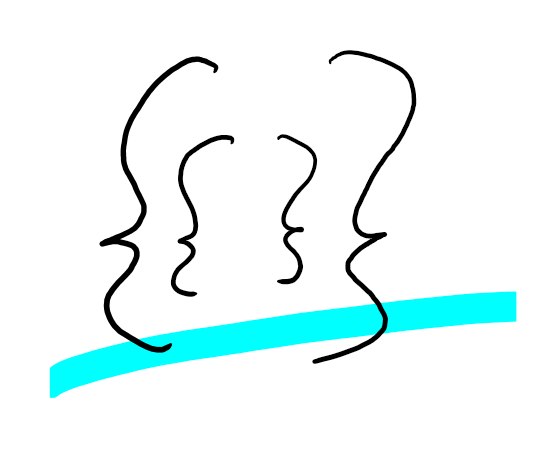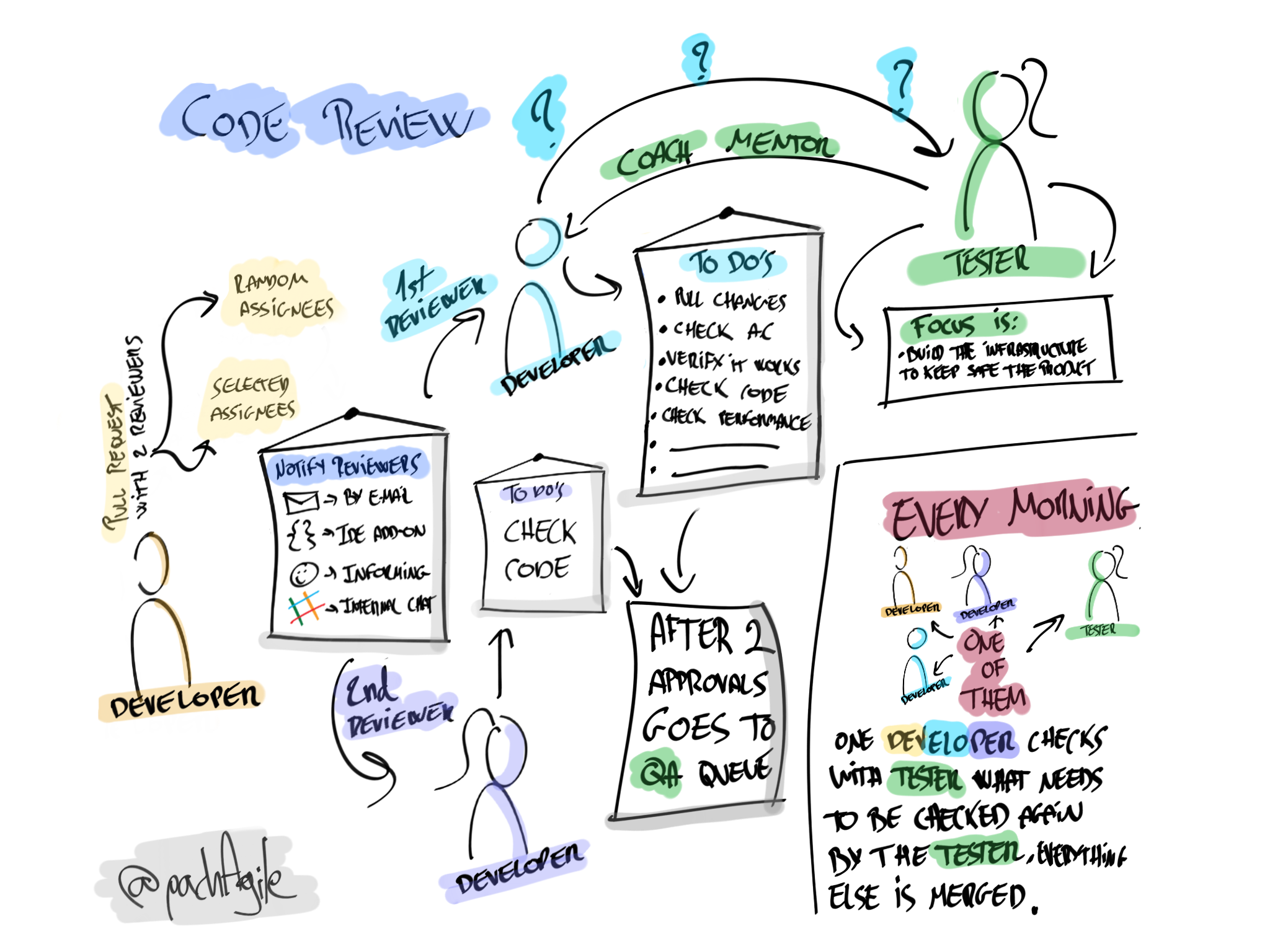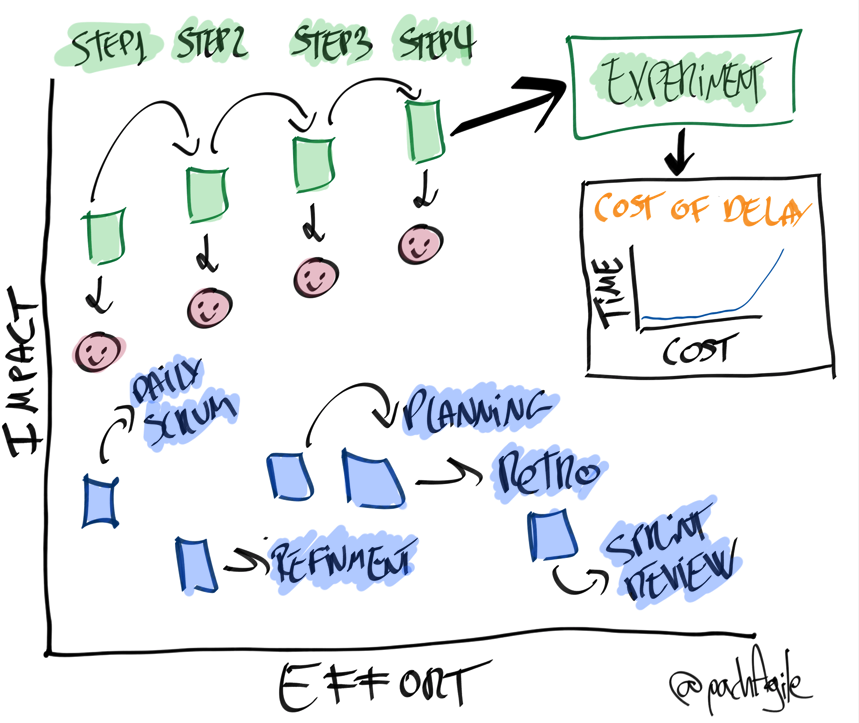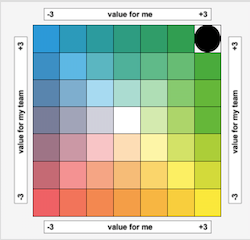I will start with: “If everything is important, then nothing is.” ― Patrick Lencioni
Followed by this:
Important
In this post I will show you a way of inspecting, adapting and following-up your strategy, but is attached to a particular way of defining the strategy, which in this case is by having several priorities, where each priority has several initiatives, if you are doing it differently this post might not be that useful, but at least will give a different point of view.
Radical Focus
The way I use to follow-up the strategy is highly influenced by a model used to follow-up OKRs, this is all described in the book Radical Focus, if you haven’t read it I highly recommend it!
Model used in Radical Focus to follow-up OKRs
The Model I use
After thinking for a while, a similar model came to my mind, of course, this is the current version, actually, while I was writing this post I sent the drawing to one colleague and she suggested that would be nice to have an area where to put these random ideas that can be raised during a follow–up meeting, so I incorporated the section! let’s see how it works.
This is the model I’m using and I will explain each of the sections.
Priority
I think is self-explanatory, we could compare it to the objective of the OKRs, here is where we are gonna have the priority statement, an example could be something like: “Reduce the traffic jams in Palma de Mallorca by empowering the citizens to use more the public transport”
Initiatives
In this section, we will have what are we going to do in order to achieve the priority, the actions we will execute in order to move towards our priority, for example, if I want to achieve the priority my first initiative could be:
- Analyze the most problematic districts, know the days and the times where the traffic jams get worst.
As you can see in the drawing we have different information in the part that is used to place the initiative statement:
- 2 smiley faces, the blue one represents who is the owner of the initiative, the person who takes care, and the orange means the buddy owner, who will support the owner with the initiative.
- The quarter where we expect to have this initiative done.
- The initiative number/identification.
The square at the right represents the KPI’s.
Like the key results, they are measurable, and we will use them in order to know when the initiative is achieved, for example, some of the KPI’s for our initiative could be:
- Have 1 meeting with the head of the traffic department to talk about the traffic jams situation.
- Elaborate 1 report with the most conflictive times and days.
Ideas
Also, I think is self-explanatory, we are super creative, right? which means that many ideas can come up when we meet, they can be random but inspiring ideas, so in this section is where we will place our ideas that will emerge while we review the priorities and initiatives, for example:
- In addition to the meeting with the head of traffic, why we don’t rent bikes and we check the city in the mornings by our own to make sure we don’t miss any district?
Next Steps
Here is where I think the magic happens and before you think about it, this not micromanagement, I think this is just a way of making sure we move forward with our important but not urgent things, that is it.
First of all you need to agree with the team how often they want to check how the priorities and initiatives are going, I don’t think we should do it every week, but neither every 2 months, maybe every 2 or 3 weeks, 1 month max could be a good start, as we will reflect in every follow–up meeting we will align on the periodicity of the meeting, do we want to to meet again in 2 weeks or we should extend it to 3 weeks because we need more time, this is up to the team.
Once the follow-up meeting starts we have to make sure we add the date, so the first meeting according to the drawing was in September 1st 2017.
Then we start, we read the priority and the first initiative, and we ask the initiative owner how is going, we ask him if he did anything related to the initiative, 2 things can happen here:
- He worked a lot so the initiative is done, so we can mark the initiative as completed.
- He did not do anything, or he just started and he has to continue.
Most likely what will happen is the second situation, so we will ask the owner what he thinks he can do before we meet again, here we have to be super honest, for example:
- 1 – Mike will go to the city hall and book an appointment with the head of traffic.
- Together with it, we will define how confident we are about it, do we think we will have time to go? or maybe not, according to the drawing the confidence level of making it is very low(2/10), is unlikely to happen, but at least the owner will try.
We continue initiative by initiative, writing what we would like to do till we meet again in the next follow-up meeting, and we write it together with the confidence level.
So the time flies and suddenly we are on the September 1oth 2017, is the day we agreed to meet again.
We will start slightly different now, first of all, we will review the last meeting objectives, and 1 by 1 we will review them, for example:
Mike had an objective, we will ask him, “Mike, did you managed to go to the city hall?” with 2/10 as a confidence level we could expect that would be hard to achieve, Mike did not manage to go and this is why you see a red cross together to 2/10, would be nice if we can talk a little bit about why he was not able to succeed with what he wanted to do, he should understand that he does not have to commit to something if he does not feel comfortable, also reflecting on the “why” will lead us to know potential blockers, impediments, etc.
This time Mike is super honest, and he says:
- Guys, I will be on holidays and I will work only 2 days before the next follow-up, I don’t want to set any action related to the initiative because I won’t make it.
This is why you don’t see in purple color a new goal related to the 1st initiative.
Should I have this visible all time?
I think so! I really think this should be visible for the team all time, you are gonna have one per each priority, but anyway I don’t think you are gonna have problems to place this somewhere close to the team, a digital version will also help a lot, with a digital version you could track all the updates, and at the end of the year see how your strategy has evolved, it’s also easier to send it to colleagues that might be in a different location.
This will help a lot with the transparency, and imagine if every team would have their strategy visible, we would have more knowledge about what is actually happening in the company.
That is is it!
I hope you understand the model, and please I will be happy to clarify and help with anything you might need.
In my experience, very interesting things happened over the follow-ups…
- You will realize when initiatives no longer make sense, things happen and we need to adapt to the new situations, therefore we could re-write the initiative, and even remove it, why not?
- You will see that what you thought that would be done in Q1 then no longer can be, so you adapt.
- We will learn with the time to set achievable actions during the follow-up meetings.
- We could add new ones, why not? priorities can change and we need to adapt to new circumstances.
- We could change owners and owners buddies because people leaving and joining the company, also people can change roles, teams, departments, etc.
- You will see progress, this is very important, is very satisfying to see how things are moving forward, the team will see initiatives being completed over the time.
- And other surprising things that you will experience over the follow-ups!
